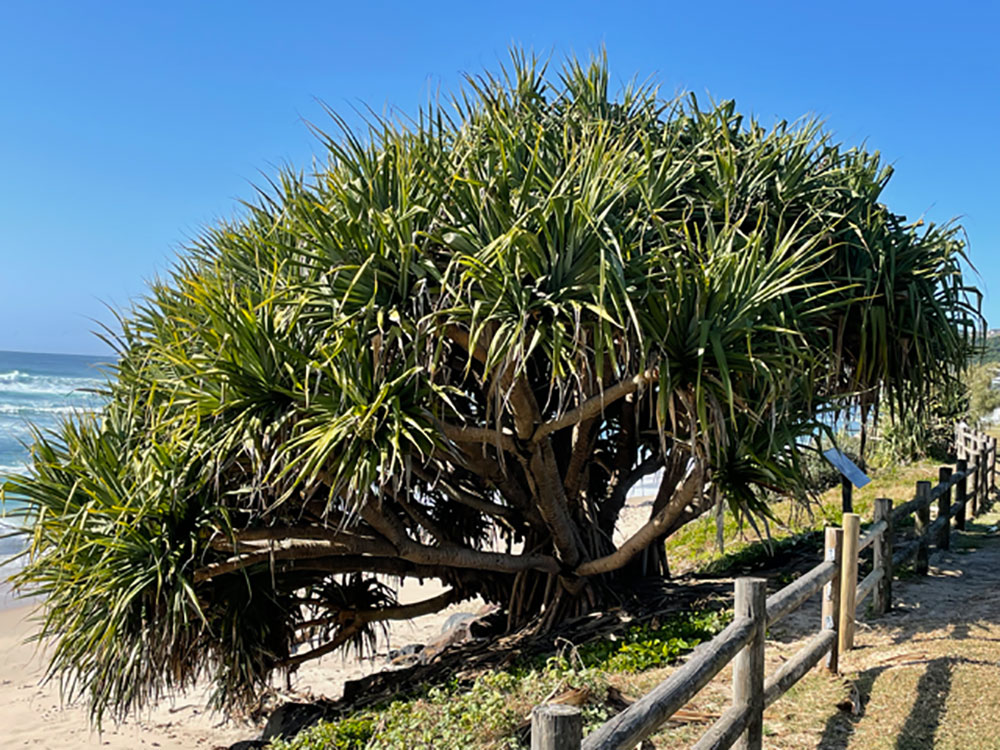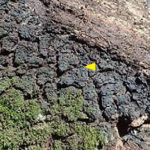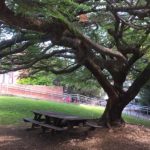Pandanus Shots
As a local consulting arborist, I recently have been asked to give my opinion on ailing pandanus trees Pandanus tectorius in Byron Bay. The growing heads of the trees were going yellow and dying.
Alternatives to Pandanus Stem Injections
Rather than recommend the trees be treated by stem injection of the systemic insecticide Confidor 200SC, I recommended that, where practical, Confidor be applied by spraying the leaves with a misting machine or backpack sprayer. Confidor can be applied in this way; being a systematic pesticide, it will travel through the plant to reach the planthoppers which are causing the tree’s demise.
This type of pest control can be expected to last for several months. The alternative treatment, which has received considerable local media coverage, is the stem injection of Confidor. This treatment was developed and registered in Queensland and adopted for use in NSW.
Problems with Administering Pandanus Stem Injections
To explain my preference for mist spraying and my concerns about stem injection, especially multiple injections, I will set some context here. A few years ago there was an outbreak of disease among pandanus caused by the planthopper Jamella australiae first noticed in the Tweed in 2004. It occurred right through the North Coast from the Tweed Shire to the Ballina Shire.
In numerous cases, stem injections were done at or near waist height or into the main trunk of the plant, sometimes under pressure. Many injections were given to mature trees during a program controlled by the local authorities. In the most part it was successful in controlling the planthopper.
The treatment involved drilling a hole in the tree. Unfortunately, that hole remains in the tree and the resultant decay around the hole increases over time. The use of pressure injections increases the extent of decay around the drill hole. It is unlikely that any of the trees subjected to a single injection will die, however repeated injections will seriously compromise the trees’ long-term survival. Multiple injections create too many dead areas in the trunk, and as these areas merge, over time, the whole trunk will die. Hence, such ongoing injective treatments will be doing the trees no favours, long-term.
Fatal Yellow Disease in Pandanus
Recent laboratory tests have identified another pest attacking pandanus trees in the local area. The pathogen is the bacteria Phytoplasma australiense. It is soft-walled, bacteria-like and lives in the phloem (the soft tissue of the stems) of the plant. This pathogen also causes yellowing followed by death of the growing heads. The decline of the affected head is much faster than with jamella but otherwise similar. A number of monocotyledons (these comprise the majority of flowering plants in terms of biomass produced) are affected by phytoplasmas, notably palm trees, where this syndrome is known as “fatal yellow disease”.
There is no cure for fatal yellow disease although injections of the antibiotic oxytetracycline have been shown to slow it. The phytoplasma pathogen is transferred from plant to plant by the leaf-sucking Jamella, therefore and here is a key point controlling the Jamella is also the most useful way of preventing the spread of the fatal yellow disease. Finally, I would warn against the tendency to anthropomorphise trees in terms of the types of treatments that serve them best e.g. a quick shot or three into the “bloodstream” to reduce disease and revive health.
Biologically, plant life and human life bear many similarities, but equally there are significant differences that need to be recognised and respected when it comes to the care of trees.




